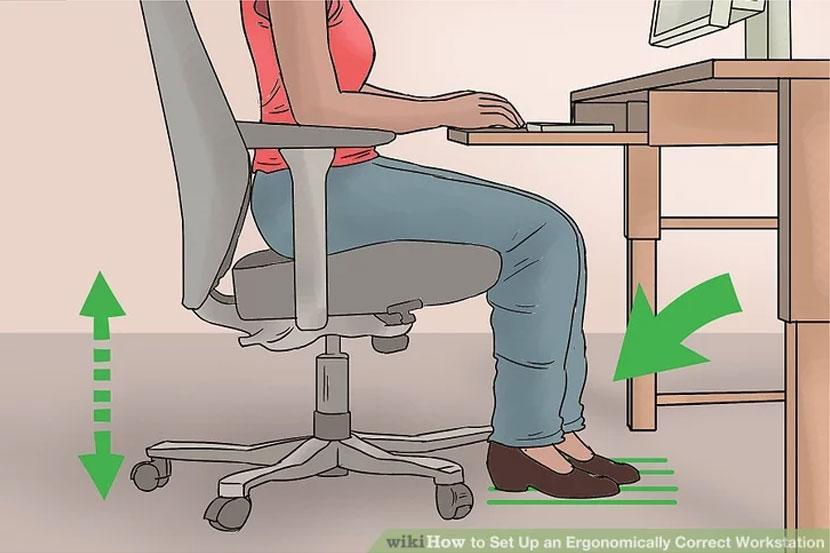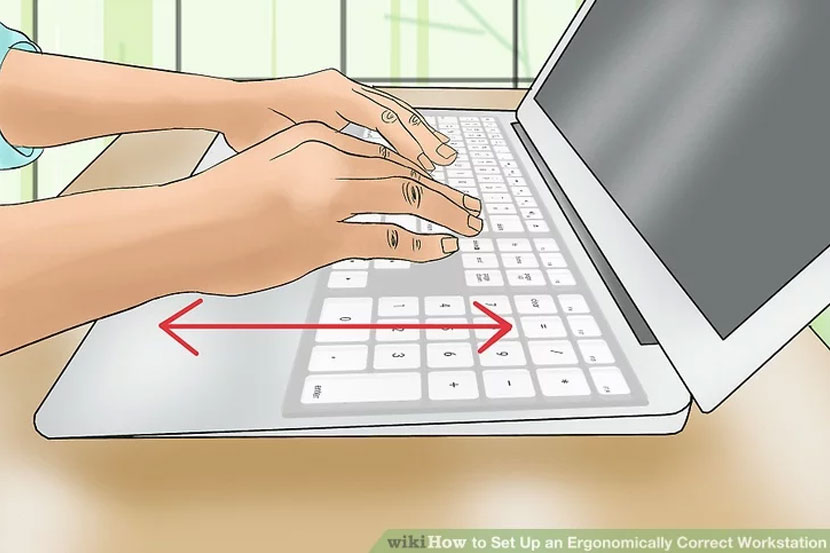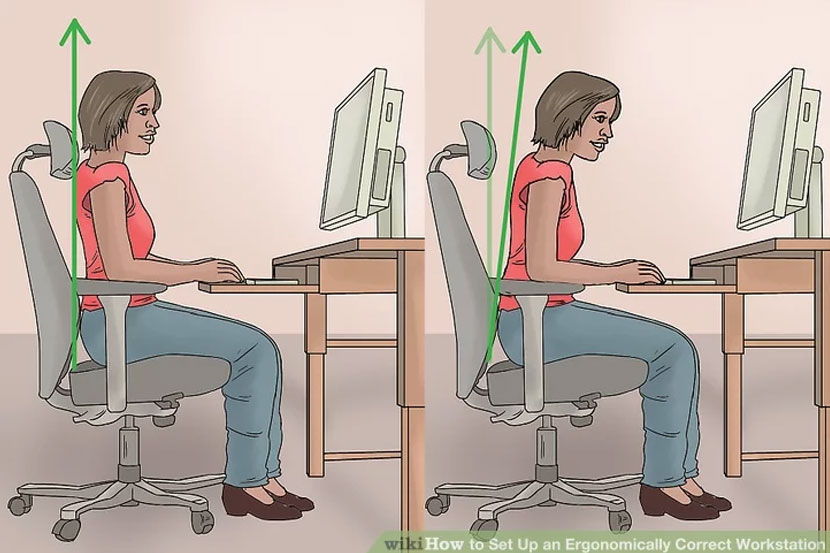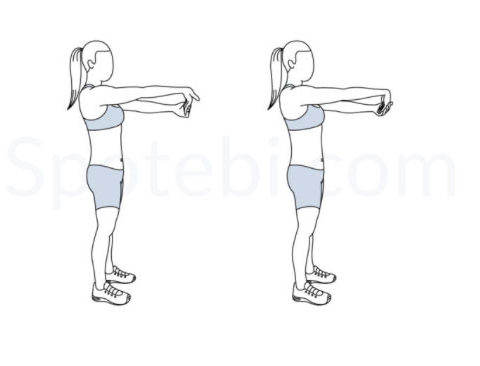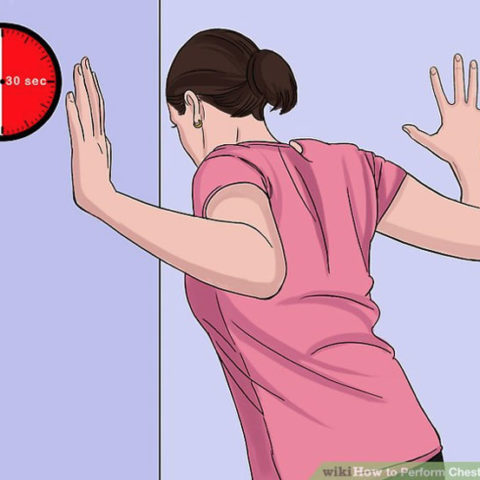When I first started working in the design industry, there wasn’t the same level of awareness for good posture practices as they are today. Workplace health and safety just wasn’t a big topic like it is now.
Fast forward to today and it’s a totally different story. Employees can expect to have a workspace setup that promotes good posture. They are encouraged to take regular breaks. Some companies even bring in massage therapists to relieve physical strain while you work!
But things can be different if you work for yourself. No one is there to manage those aspects for you. It’s up to you to make sure you’re not damaging your body with harmful habits and get into a good routine. Sitting is supposedly the new smoking after all!
Last week I spoke with Melbourne based Chiropractor, Cameron Newitt from Renewed Chiropractic about what causes RSI and how we can prevent it. Cameron treats patients with RSI symptoms on a regular basis and kindly agreed to give us his professional advice on how we can better manage our workspace health.
I hope that you can bring some of these strategies into your own daily routine to make sure your creative days have longevity!


Learn Calligraphy
on the iPad
from Scratch!
Create stunning calligraphy in Procreate with no experience or special tech skills (even if you have messy handwriting and don’t think you’re creative enough)
WATCH THE FREE WORKSHOPCan you explain what RSI is and what causes it?
RSI stands for Repetitive Strain Injury and is a catch-all term which can be used to describe a group of injuries that have occurred from repetitive overuse. Whether it is injury caused from writing, using a computer, an iPad or typing on your phone.
People tend to think of repetitive strain caused by an action, like constantly moving your hands or wrists, but even sitting in a the same position for a long time is a repetitive action. Staying in that one sustained position isn’t natural for your body. This is also referred to ‘postural strain’. It starts to put a burden on your tissues, joints and different muscle groups.
It is also common for people to experience headaches that can be the result of referral pain from the neck or even the jaw. Rarely is the pain from within the head. It’s often neck or jaw problem that is referring pain into the head.
Tension headaches are very common. They often come from muscle in the neck. People that are working at a computer or iPad and looking down can lead to headaches. It would also be classified as a repetitive strain injury because it has built up from sitting at a desk all day.
You might think a headache is caused by eye strain, and that can be part of it too, but more often than not, there’s a lot of involvement from the neck and muscles.
What steps would you suggest to prevent these different forms of RSI?
The first step is to remove the strain. A lot of it can be managed at home, such as changing your posture regularly so you are not in a sustained position for too long.
Ergonomics are important too. Be sure your workstation is set up in a way that isn’t putting strain on your body. Having your computer at eye level so your neck stays in a neutral position will be of benefit. Make sure your chair is at the right height so your not slouching over your desk while you work. Start by taking the strain off your body and your posture.
There will be circumstances you can’t create the ideal set up, like when you’re working on your iPad and need to looking downwards. The best thing to do in that scenario is to take regular breaks. Give your body a chance to reset. If you’re sitting at a desk over your iPad for 2-3 hours straight, that is too much for your body and it will start to fatigue. That is where the injury will start occurring.
Diet and keeping well hydrated are important too. If your diet is off or you are dehydrated, you are more prone to not recovering as quickly as you should. Little stuff that compounds.
What could someone do to treat the injury if they were to experience symptoms?
If you were to sustain RSI, it isn’t something that is there for life and there are ways to manage it. Whether it’s ergonomics or poor posture that was the cause, you need to remove that first and then your body will start to naturally repair and recover.
RSI is a compounded injury that is a result of causing more damage before your body has a chance to heal itself. So if you can remove the strain, that is the initial step.
Then, to ensure you are not compounding the injury, getting up and changing position regularly as well as stretches and strengthening exercises. These are all things that will prevent further injury and return your body to it’s normal function.
Do some gentle basic stretches to relieve the tension. Target specific exercises to the area whether it’s wrist pain, forearms, neck, back or headaches. Neck exercise can really help with relieving tension headaches as well.
Then there’s also compression, which can be good for muscle tension. Using braces or compression garments to give more support. Often when you have RSI it can be an imbalance like muscles that are too tight or not functioning properly and are a bit weak, so the support gives them more balance.
Compression also restricts you from doing the harmful action that got you there in the first place. It gives that tissue a chance to rest and recover because it’s physically restricting you from doing it.
You can do this at home yourself with a bandage around your wrist to give it support. There’s cheap and easy ways to do that.
What’s your thoughts on standing desks? Are they a good investment for workspace health?
Standing is great but only if you are changing your posture regularly. A lot of people were getting standing desks where the only position it had was the standing height and you start to experience hip or feet problems. Standing all the time is the same as sitting really because you’re just causing strain. If you are then standing for 8 hours a day in the same position, that creates a whole different type of strain on your body.
You can get desk brackets that extend into a standing height, or the adjustable ones so you can alternate between the two. This is a much better option.
They are good for mental alertness too. People tend to be more productive when they were standing, but body wise, it’s more strain if you aren’t mixing those positions.
I would suggest, alternate it in the same schedule as your breaks – every 30-45 minutes, stand for a bit and then alternate. The amount of time you stand will be a personal thing.The main principle is to avoid any type of sustained posture as long as you can.
If you are then standing for 8 hours a day in the same position, that creates a whole different type of strain on your body.
What practical things you would recommend could be part of a daily routine that would help to reduce the risk of RSI?
Set a timer on your phone and take regular breaks every ½ hour to 45 minutes. You don’t need a long 20 minute break. All you need is a couple of minutes to stand up, stretch out and walk around the room.
Patients often complain they don’t have the time, but you don’t need a long break. 30 seconds – 1 minute at a minimum will do. There are times if you are sitting there for hours at a time, you are going to lose focus for a minute or two anyway, so you might as well stand up and move around. After a while, that becomes routine. Even if you are pushed for time you can definitely fit it into your schedule. Get a glass of water or coffee. By the time you come back, it’s given your body a break from that same posture and it has a chance to reset. It’s also great for a mental refresh too.
Gentle basic stretches will relieve tension too. You can target specific areas you feel the strain with exercises – whether it’s wrist pain, forearms, neck, back.
Suggested Exercises
See below for some suggested exercises to relieve tension in the most common areas.
Wrists and Hands
Refresh your wrists and hands with these gentle stretches outlined on the Spotebi website.
Chest Stretches
You can relieve tightness and soreness in the chest and back by doing these simple stretches show on Wiki How.
Neck Stretches
Gentle neck stretches not only protect your neck muscles but will also prevent tension headaches. Click here for directions.
To find out more about Cameron and Renewed Chiropractic, you can see his website here.

